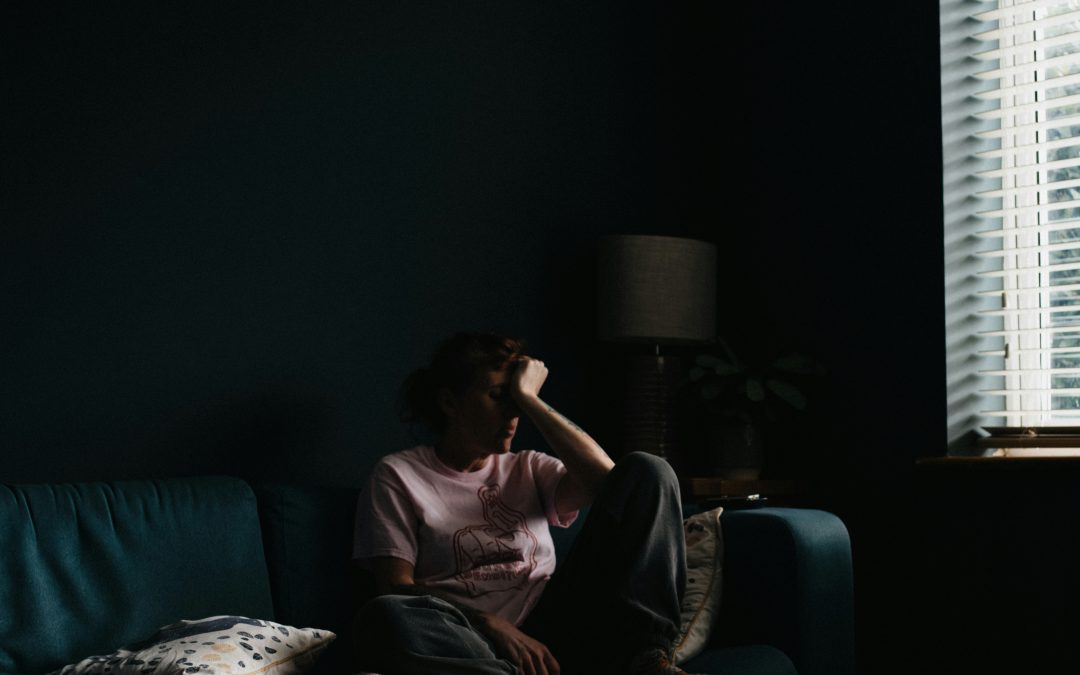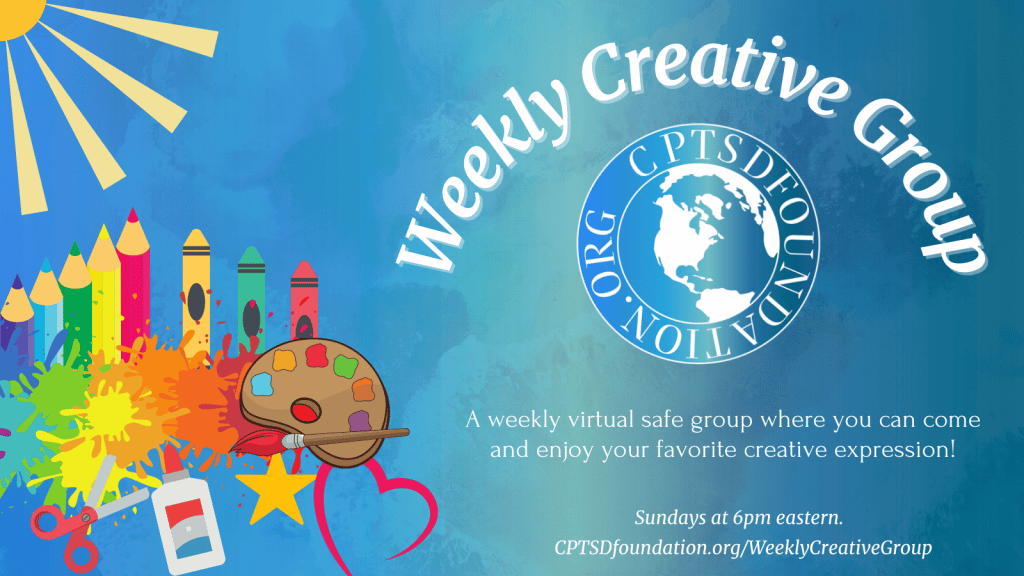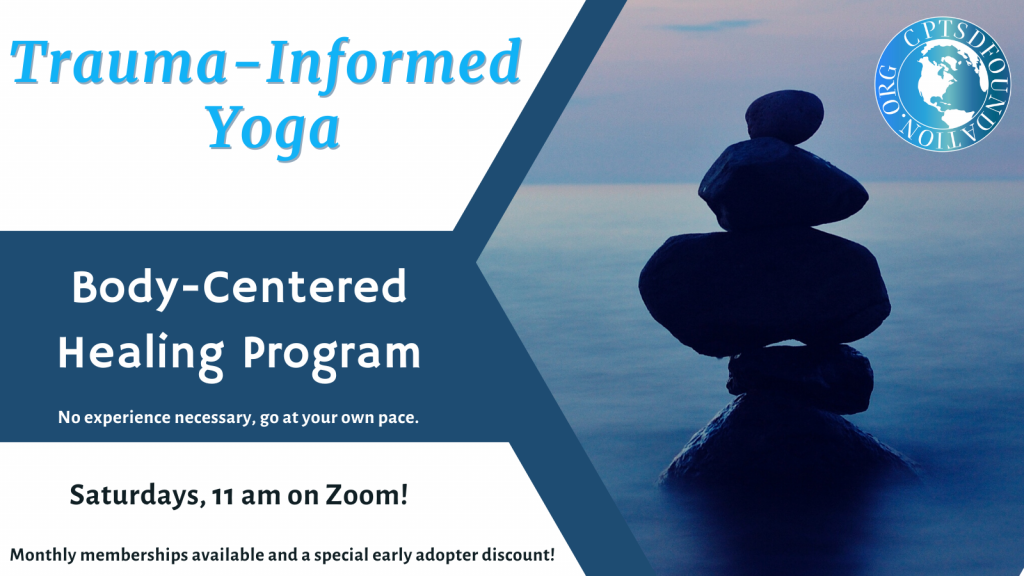Do you isolate yourself from others and feel safer alone? Or are you afraid to be alone and choose to always be with company? It is likely that these behaviors are coping strategies you’ve developed, and today, I’d like to talk about why and what to do about them now that you’re an adult.
Complex trauma survivors learned, likely early on, that people can’t be trusted — people aren’t safe, and they haven’t met your emotional needs. The history includes many let downs — those who were supposed to be safe and keep you safe, teach you to trust and have your needs met, provide secure attachment didn’t — and it impacted your life in ways that may continue into adulthood. Therefore, you had to find a way to survive, and it’s likely you have found creative ways to cope — making isolation (or even constant company) a survival strategy.
Do you fear getting close to others?
Someone who is using isolation as a survival or coping mechanism may say things like, “I like to be alone,” “I’m not really that social,” or “I don’t need a lot of friends” — even if, deep down, they crave connection. Understandably, based on their history, they find it safer to be self-reliant and not vulnerable with other people – other people have hurt them; being ‘social’ and ‘together’ feels too risky.
Sadly, isolation is becoming easier.
The COVID-19 pandemic and the subsequent increase in the virtual nature of our world have allowed for isolation to become more commonplace. It is easier to stay distant — texting instead of calling, emailing instead of seeing someone. This isolation also leads to people being more socially anxious and awkward (we are seeing this especially with young people)! Now, isolation isn’t just a coping method for trauma survivors, it’s also fueling more trauma (mental health issues, addiction and other maladaptive coping strategies) and preventing connection — even though connection is how we heal trauma.
And it’s not just those who are isolating who are attempting to cope with trauma…
On the flipside, are you afraid to be alone?
Not all trauma survivors want to be alone. Some desperately long for attachment and can’t tolerate being alone because it’s too scary and triggering. Solitude brings up the pain of abandonment, rejection, and never having their emotional needs met. They may constantly book their schedules with social events, participate in everything, and do whatever is necessary to always be in the company of others (even if the ‘others’ aren’t safe or healthy people).
Trauma survivors tend to go one way or the other: isolation or constant company.
If you’re a trauma survivor, it’s likely you relate to one of these extremes:
- People hurt you, and you feel safer alone. While deep inside, you may long for connection, it feels too dangerous. This sometimes leads to loneliness, depression, anxiety, and the use of additional coping mechanisms like drinking, drugs, self-harm, or binge eating to emotionally self-regulate.
- Being alone feels terrifying, and you avoid it at all costs. People didn’t meet your emotional needs, and you desperately crave connection. This sometimes leads to being with people who aren’t safe, having relationships that aren’t healthy, or taking part in behaviors that don’t make you feel good, like drinking, drugs, sex, or food restriction. And sometimes you still feel alone, even when you’re around lots of people.
Both extremes can lead to further trauma and prevent healing. These behaviors of extreme isolation or constant company and the fears that go with both for trauma survivors can also be categorized as part of a BPD diagnosis. As a result of trauma, people act in ways that they think will help them survive — which is why we need a more trauma-informed view of borderline personality disorder.
Why is thinking so black and white for a trauma survivor?
Children don’t have abstract thinking. That develops later in the brain. So, if a child lived in danger at home, never knowing what would set off their parent, or they got hit for doing something, their brain translates that to: I can never do this again. It’s easier to be alone!
If a child’s emotional needs aren’t being met and they feel alone, their brain might translate that to: I must try harder to be loved … be with people all the time and keep trying!
Moving into adulthood with one of these belief systems can create some unhealthy and rigid behavior patterns that no longer serve trauma survivors who are now safe in their adult lives.
You can move to the middle, where there is comfort doing both.
Living in extremes is how many trauma survivors have learned to protect themselves. That kind of extreme was necessary in your childhood — it allowed you to not notice some things (hypoarousal) and/or be vigilant (hyperarousal) to notice everything! It was an incredibly creative superpower you had to develop to keep you alive. What do you do with that superpower now that you are an adult, who can be safe in your own body? Maybe it’s time to start taking small steps into the middle — the gray area — and see if the extremes are still necessary to keep you safe. Trauma-informed therapy can help.
Expanding your ability to be present in the moment — safely — allows you to notice what you need at that time. It allows you to explore the gray area — and by expanding your window of tolerance, you can have a good balance of connection and alone-time that creates for a life of self-trust, safety, including in relationships, joy and fulfillment.
Is black and white no longer working for you?
If you’ve met me, you know I wear all black nearly every day. Maybe the occasional white dress shirt with a black sweater. So, I say, let’s keep black and white thinking for our clothes!
If you’re scared to be with people…
Or you’re scared to be alone…
If your coping strategies are no longer working…
If you are using substances, self-harm, food or restriction…
If your mental health is worsening…
If you still feel lonely or scared or unloved…
The future CAN hold something that works better and feels better. Maybe you just need some help — another hard thing for trauma survivors to do — ask for help.
If you’re interested in exploring the possibility of therapy, please reach out to our office (if you are local to our area). Let’s keep black and white thinking for what we are going to wear tomorrow.
Photo by Annie Spratt on Unsplash
Guest Post Disclaimer: Any and all information shared in this guest blog post is intended for educational and informational purposes only. Nothing in this blog post, nor any content on CPTSDfoundation.org, is a supplement for or supersedes the relationship and direction of your medical or mental health providers. Thoughts, ideas, or opinions expressed by the writer of this guest blog post do not necessarily reflect those of CPTSD Foundation. For more information, see our Privacy Policy and Full Disclaimer.

Robyn is a Licensed Marriage and Family Therapist with 20+ years of experience providing psychotherapy, as well as the founder and clinical director of a private practice, Brickel and Associates, LLC in Old Town, Alexandria, Virginia. She and her team bring a strengths-based, trauma-informed, systems approach to the treatment of individuals (adolescents and adults), couples and families. She specializes in trauma (including attachment trauma) and the use of dissociative mechanisms; such as: self-harm, eating disorders and addictions. She also approaches treatment of perinatal mental health from a trauma-informed lens.
Robyn also guides clients and clinicians who wish to better understand the impact of trauma on mental health and relationships. She has a wide range of post graduate trauma and addictions education and is trained in numerous relational models of practice, including Emotionally Focused Couple Therapy (EFT), the Psychobiological Approach to Couple Therapy (PACT), and Imago therapy. She is a trained Sensorimotor Psychotherapist and is a Certified EMDRIA therapist and Approved Consultant. Utilizing all of these tools, along with mindfulness and ego state work to provide the best care to her clients. She prides herself in always learning and expanding her knowledge on a daily basis about the intricacies of treating complex trauma and trauma’s impact on perinatal distress.
She frequently shares insights, resources and links to mental health news on Facebook and Twitter as well as in her blog at BrickelandAssociates.com
To contact Robyn directly:
www.BrickelandAssociates.com




